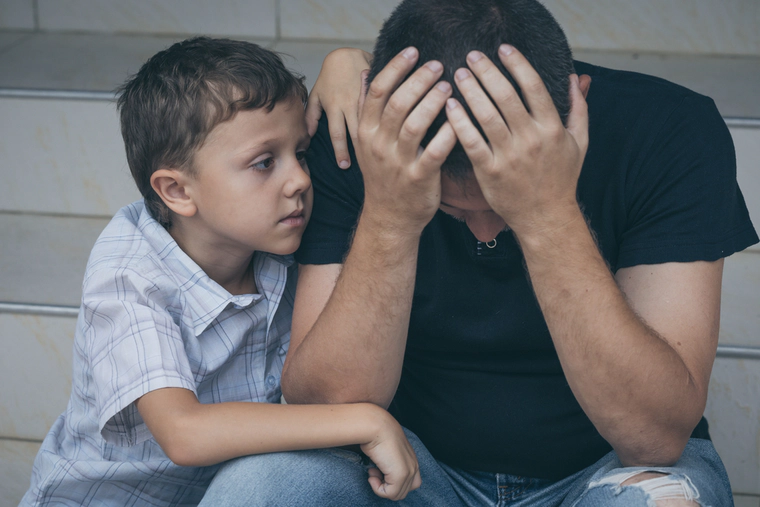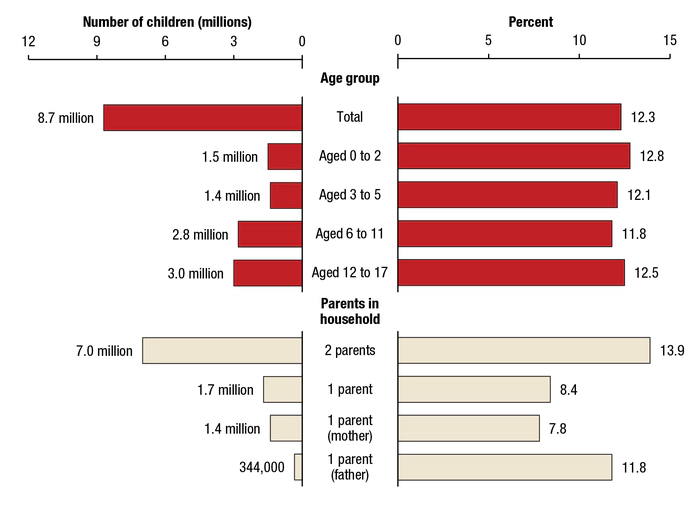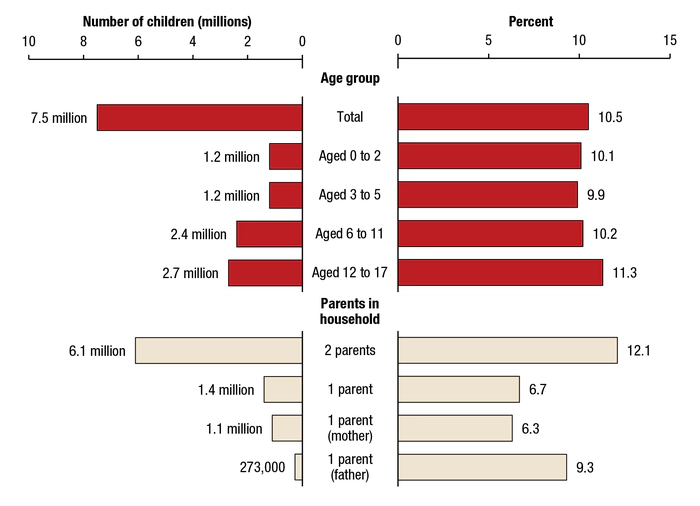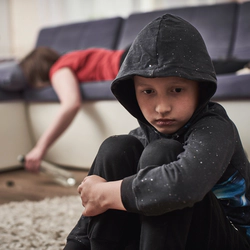Get Clean for Them: At least 10 Percent of Children Live in Households with at Least One Addicted Parent
This article highlights the findings regarding youths being exposed to substance abuse at a very young age while also extrapolating what that means for young people to grow up in a home where substance abuse is normal and seen as a typical thing to do.

If a young person sees a parent using drugs and alcohol as a coping mechanism, it is likely they may adopt the learned behavior that drugs and alcohol are legitimate tools for dealing with life’s problems. To avoid intergenerational drug addiction and the critical harm caused by it, addicts who have children should get clean for themselves and their children too.
Addiction in the Home: What the Data Shows

Image source: SAMHSA.gov
A groundbreaking report published in 2017 by the Substance Abuse and Mental Health Services Administration showed that about one in eight children aged 17 or younger live in a household with at least one parent who abuses drugs. SAMHSA also estimated that about one in ten children live in a home with at least one parent who is addicted to alcohol. That means about 8.7 million U.S. children are growing up in households where drug abuse occurs, and another 7.5 million are growing up in households where alcohol abuse occurs.1

Image source: SAMHSA.gov
Number and percentage of children aged 17 or younger living with at least one parent with a past year alcohol use disorder, by age group and household composition: annual average, 2009 to 2014. Image source: SAMHSA.gov
In discussing the potential harm these upbringings may have on children, it’s important to emphasize that not all children who grow up in such households will be harmed as a result; rather, their risk for harm is considerably higher. The SAMHSA researchers spoke to this point. In their conclusion, they wrote: “SUDs [substance use disorders] can have a profound influence on the lives of people and their families, particularly their children… Although many children living in households with a substance-using parent will not experience abuse or neglect, they are at increased risk for child maltreatment and child welfare involvement compared with other children. The annual average of 8.7 million children aged 17 or younger living in U.S. households with at least one parent who had a SUD highlights the potential breadth of substance use prevention and treatment needs for the whole family—from substance use treatment for the affected adults to prevention and supportive services for the children.”
The SAMSHA researchers summarized the issue perfectly. People who abuse drugs and alcohol are not just harming themselves. There are about 8.7 million children who are being directly affected by a parent’s addiction, highlighting yet another reason why people who struggle with substance abuse must get clean as soon as possible.
Recent Drug Use Trends Pose Additional Risk to Children
The SAMHSA data cited above was gathered in 2014. It published addiction trends in American households going back to the 20th century. However, a more recent report published in 2020 showed how recent drug use trends have worsened conditions for American children.
Child welfare researchers at the National Center on Substance Abuse and Child Welfare found that the 21st-century opioid epidemic has had the worst effects on child welfare since recording began.2
One of the critical metrics the organization uses to examine harm to children is when the child’s at-home living situation becomes so harmful the state must step in and remove the child. According to the data, in 2000, about 18.5% of children removed from home lived in a home where at least one parent abused drugs or alcohol. But by 2019, that percentage more than doubled, with 38.9% of removed children coming from homes where at least one parent had been abusing substances.
The National Center on Substance Abuse and Child Welfare researchers concluded that the opioid epidemic and its widespread nature in American families was the critical culprit in causing so many parents to become addicted to drugs (and so many children to have to be removed from their homes and placed under the custody of Child Protective Services.
It’s Not Just Drugs: Parental Alcohol Consumption Also Poses Serious Risks for Children

While the Substance Abuse and Mental Health Services Administration briefly touches on parental alcohol misuse as a harmful factor in a child’s upbringing, the National Association for Children of Alcoholics goes much further in examining alcohol misuse in American homes. NACOA found that children living with a parent who misuses alcohol score lower on critical measures of family cohesion. Such children also score lower on intellectual and cultural orientation, active and recreational orientation, and overall independence. Finally, such children also usually experience higher levels of conflict within the family than children of sober parents do.3
Not only does alcohol addiction create a harmful, risk-laden, potentially toxic environment for children to grow up in, but children who are raised in an environment where alcohol abuse occurs are also more likely to go on to abuse alcohol as teens or adults. Herein lies the vicious cycle of addiction, the fact that such a crisis is often intergenerational. According to NACOA, children of alcohol addicts are about four times more likely to develop alcohol addiction than children of non-addicts.
Get Clean for Them

Every parent wants what’s best for their child, and their greatest mandate is to create the safest, healthiest, most rewarding, and most suitable environment for their children. Given the overwhelming amount of evidence that shows the harm children experience when they grow up in a house where their parents misuse alcohol, parents who struggle with addiction should do everything they can to get clean. Family members of such individuals should do everything they can to get their loved ones into qualified residential addiction treatment.
Sources Cited:
-
SAMHSA. “Children Living with Parents Who Have a Substance Use Disorder.” Substance Abuse and Mental Health Services Administration, 2017. samhsa.gov ↩︎
-
NCSACW. “Child Welfare and Alcohol and Drug Use Statistics.” National Center on Substance Abuse and Child Welfare, 2022. ncsacw.acf.hhs.gov ↩︎
-
NACOA. “Children of Alcoholics: Important Facts.” National Association for Children of Alcoholics, 2020. nacoa.net ↩︎






 ®
®